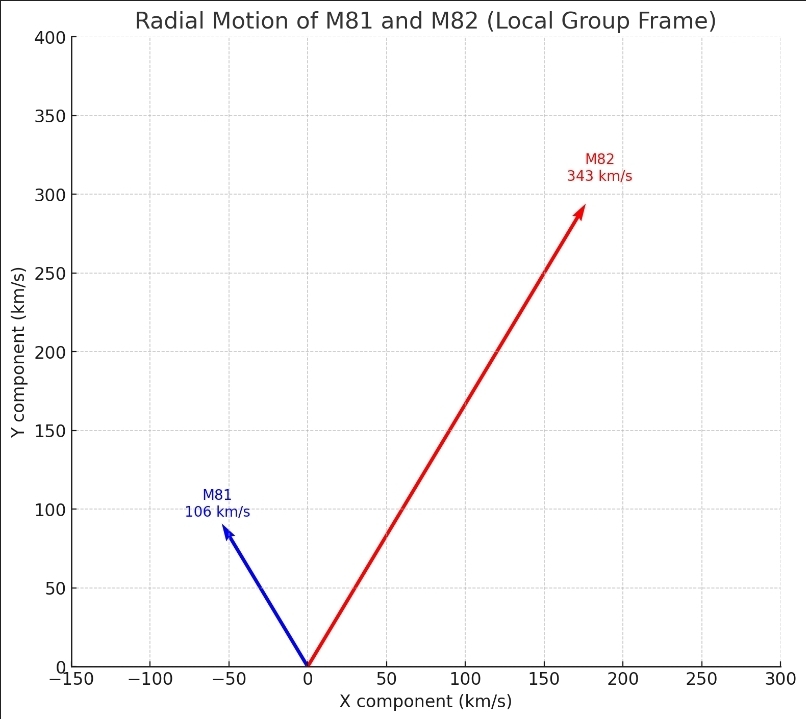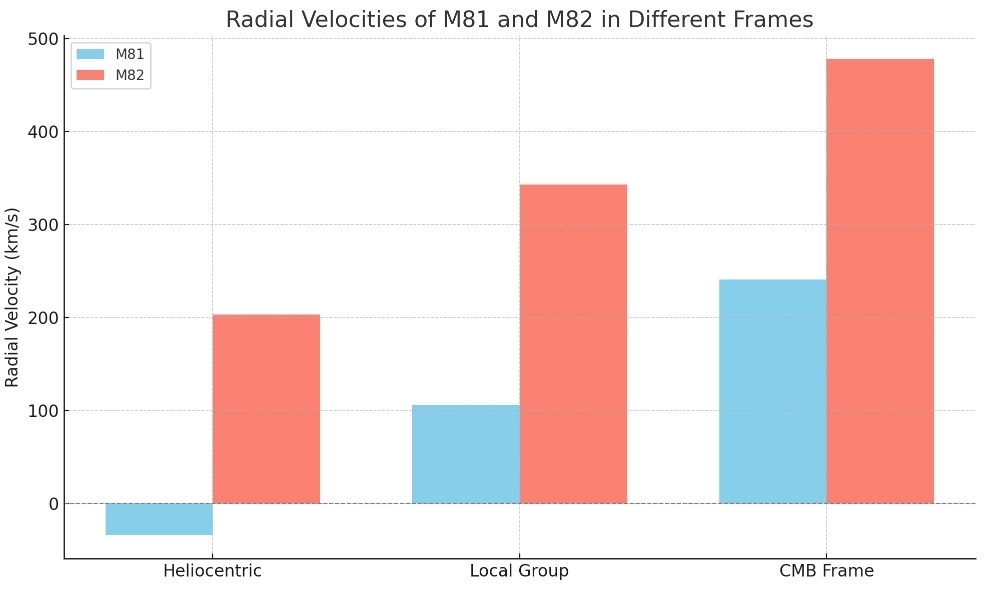Heliocentric velocities M81 and M82 in different frames of reference
The heliocentric radial velocities of Messier 81 (M81) and Messier 82 (M82)—corrected for the motion of the Sun relative to these galaxies—are as follows:
🌌 M81 (Bode’s Galaxy)
- Heliocentric radial velocity: –34 km/s
- This negative value means M81 is approaching us.
🌌 M82 (Cigar Galaxy)
- Heliocentric radial velocity: +203 km/s
- This positive value indicates M82 is receding from us.
Additional Notes:
- M81 and M82 are part of the same galaxy group (M81 Group) and are interacting gravitationally.
- These velocities can vary slightly depending on the exact method or catalog used, but the values above are broadly accepted.
Here are the radial velocities of M81 and M82 in different reference frames:
🌌 Messier 81 (M81) – Bode’s Galaxy
- Heliocentric radial velocity: –34 km/s
- Local Group (LG) corrected velocity: +106 km/s
- Cosmic Microwave Background (CMB) frame velocity: +241 km/s
🌌 Messier 82 (M82) – Cigar Galaxy
- Heliocentric radial velocity: +203 km/s
- Local Group (LG) corrected velocity: +343 km/s
- CMB frame velocity: +478 km/s
🧭 Frame Reference Summary:
- Heliocentric: relative to the Sun
- Local Group: corrects for the Sun’s motion within the Local Group of galaxies
- CMB frame: corrects for the Solar System’s motion relative to the rest frame of the expanding universe
These corrected velocities are useful when comparing distant galaxies’ motion in a cosmological context or modeling galaxy interactions.
The bar chart below shows the radial velocities of M81 and M82 in three different reference frames:
- M81 appears to be approaching us in the heliocentric frame but is receding in the Local Group and CMB frames.
- M82 is receding in all frames, with increasing velocity as broader cosmic motion is accounted for.
The vector diagram below shows M81 and M82 radial velocities:
- The horizontal axis shows radial velocity in km/s.
- The vertical offsets are for visual clarity, representing different reference frames (not actual spatial positions).
- Blue vectors are for M81; red vectors are for M82.
- Leftward vectors indicate approach; rightward indicate recession.
You can clearly see:
- M81 transitions from approaching in the heliocentric frame to receding in the Local Group and CMB frames.
- M82 consistently recedes, with increasing velocity in broader cosmic frames.

